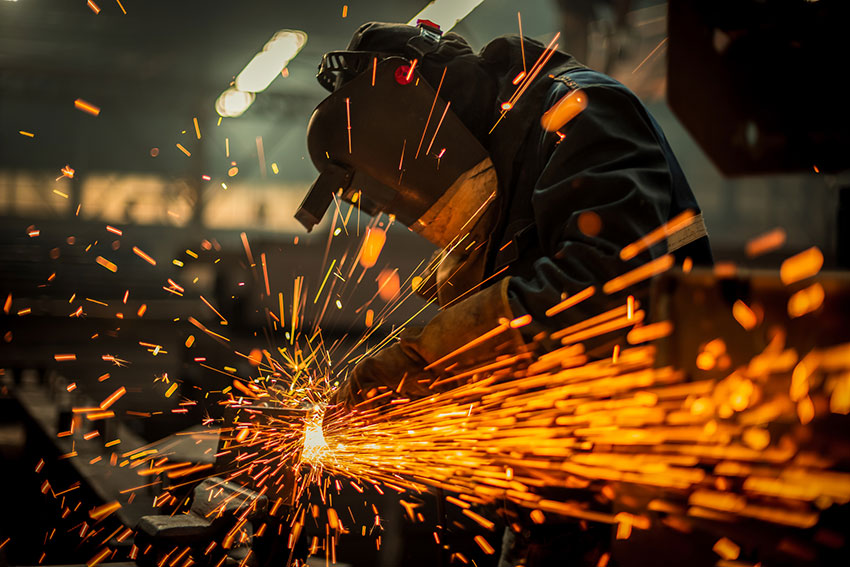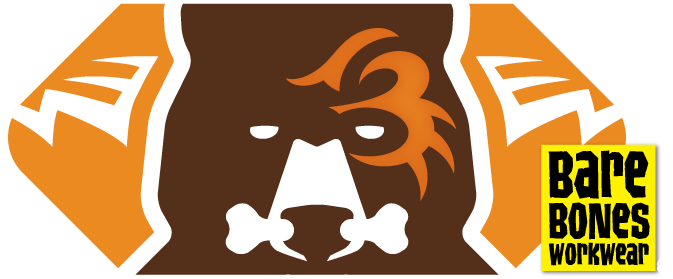Choosing the Right Protection: Fire Retardant vs Flame Resistant?
 Fire safety features in workwear clothing play a critical role in helping to protect employees, especially those who work in high-risk industries such as firefighting, welding, or chemical processing. This type of clothing is often made from fire retardant or fire-resistant materials, which can significantly reduce the risk of burns and other injuries by slowing the spread of fire or even self-extinguishing flames.
Fire safety features in workwear clothing play a critical role in helping to protect employees, especially those who work in high-risk industries such as firefighting, welding, or chemical processing. This type of clothing is often made from fire retardant or fire-resistant materials, which can significantly reduce the risk of burns and other injuries by slowing the spread of fire or even self-extinguishing flames.
Ensuring workwear is fire-safe contributes to a safer overall work environment, helping businesses comply with occupational health and safety regulations while preventing costly accidents and reducing legal liabilities. However, the terminology surrounding this type of protective workwear clothing can get confusing, making it hard to determine what you need to buy to keep you safe on the job.
What’s the difference between fire-retardant vs. fire-resistant materials or fire rated vs. fire-retardant? While it might seem like a slight nuance, the difference is dramatic in the type of protection provided.
Continue reading to discover how flame-resistance clothing is rated, what standards are used across industries, and the difference between fire-retardant vs. fire-resistant.
How Flame-Resistant Clothing is Rated
Flame-resistant (FR) clothing is typically rated based on the level of protection it offers against specific types of thermal hazards, like fire or electric arcs. This rating is represented by a value known as an Arc Thermal Performance Value (ATPV) or Heat Transfer Index (HTI) and is measured in calories/cm^2. The higher the ATPV, the more protection the garment offers.
The process for rating flame-resistant clothing includes the following:
- Material testing. FR clothing is made from durable materials that undergo rigorous laboratory testing to assess their heat and flame resistance.
- ATPV Rating. After a material passes flame-resistance testing, it’s rated for Arc Thermal Performance Value (ATPV). The ATPV is a measurement of a material’s ability to protect the wearer from the heat required to suffer a second-degree burn. This is determined through a standard test, ASTM F1959/F1959M, where the fabric is exposed to a series of electric arc discharges of increasing energy.
- Hazard Risk Category (HRC). Based on the ATPV rating, the material can be classified into Hazard Risk Categories ranging from 1 to 4. The higher the ATPV rating, the more protection the material will provide. An ATPV rating of 4 is sufficient for tasks assessed as an HRC 1, the lowest risk, while an ATPV rating of 40 or more will protect the wearer when performing tasks rated HRC 4, the most severe risk.
Flame-Resistance Standards Across Industries
Flame-resistance standards vary across industries, with each sector tailoring its standards to address specific hazards and risks associated with their unique work environments. Understanding the standards set by different industries will help you identify the right type of FR clothing to wear for protection while on the job.
NFPA 2112 — Flash Fire Standard
The National Fire Protection Association (NFPA) 2112 specifies the minimum performance requirements for flame-resistant fabrics for use in areas at risk of flash fires. A flash fire is a sudden and intense fire caused by the ignition of a mixture of air and dispersed flammable substances such as oil or gas. Flash fires can occur in any environment where air and fuel mix in concentrations great enough to cause combustion.
Wearing flame-resistant clothing substantially increases the likelihood of workers surviving flash fire incidents. FR clothing also lessens the severity of burns the wear may receive, thereby reducing recovery times following a flash fire.
NESC — Arc Flash Protection
The National Electrical Safety Code (NESC) are standards set by the Institute of Electrical and Electronics Engineers (IEEE) to establish safety requirements for workers operating near electrical, communication, and any equipment that utilizes enough electrical voltage that an arc flash is possible. An arch flash is a phenomenon where a flashover of electric current diverts from its intended path and travels through the air from one conductor to another or the ground.
The NESC offers guidelines for the safe installation, operation, and maintenance of electric power and communication utility systems serving residential, commercial, and industrial structures. NESC requires workers to wear arc-rated personal protective equipment with an arch rating exceeding the calculated arc flash risk. If the energy exceeds 2 cal/ cm2, arc-rated personal protective equipment is required. Workers can wear non-safety clothing if the energy involved is less than 2 cal/ cm2.
ASTM F1506 — Arc Flash Protection for Electrical Workers
The American Society for Testing and Materials (ASTM) has its own standard for flame-resistant clothing that applies to electrical workers in environments where they can be exposed to arc flash and related thermal hazards. The standard features two basic requirements:
- A fabric sample must exhibit self-extinguishing properties within less than 2 seconds of exposure to flame with a char length of less than 6 inches. The fabric’s flammability assessment must remain the same after 25 wash cycles.
- The fabric must also undergo Arc Thermal Performance testing per ASTM Test Method F1959. The results of this testing should be clearly stated as an arc rating indicated on the garment label.
A garment that meets ASTM F1506 complies with OSHA 1910.269, NESC, and NFPA 70E. Every garment meeting ASTM F1506 standards must be labeled with a tracking code, a declaration that the garment conforms to ASTM F1506 requirements, the manufacturer’s name, garment size, care instructions, fiber content, and the arc rating.
Fire-Retardant vs. Flame-Resistant
Fire-retardant and flame-resistant are commonly used concerning materials and how they react to fire. While they sound similar, they refer to different characteristics.
Fire-Retardant
This term describes materials chemically treated to self-extinguish if ever set on fire. In other words, these materials are designed to slow the spread of fire or not catch fire at all. Fire retardant materials can either be naturally resistant to fire or treated with fire retardant chemicals. They’re often used in environments with a high fire risk or in items that must comply with certain safety standards, such as children’s clothing, furnishings, and building materials.
Flame-Resistant
This term refers to a material’s ability to resist ignition or not to catch fire quickly if it does ignite. flame-resistant materials can withstand heat up to a certain temperature but will eventually burn if the heat or the exposure to fire is high or long enough. These materials are used in many applications, such as fire doors, fire blankets, and protective clothing for firefighters.
While fire retardant and flame-resistant materials are designed to slow down and reduce the spread of fire, fire retardant materials are usually treated to extinguish themselves once the heat source is removed. In contrast, flame-resistant materials are designed to resist heat and flame for longer but will eventually burn.
Which is Better: Flame-Resistant or Fire-Retardant
When protecting your health and safety on the job, most people would choose the option that significantly reduces their risk of catching fire. However, the difference between fire-retardant vs. flame-resistant isn’t necessarily so clear cut.
Practically speaking, flame-resistant workwear brands offer all the protection you’ll need in most work environments. You need protection that prevents what you’re wearing from unexpectedly igniting due to an errant spark or a brush with an open flame. These encounters are brief because when you come into contact with something scorching (like an open flame), your natural reaction is to move away. You don’t need to wear flame-retardant materials coated in chemicals that prevent what you’re wearing from catching fire because you won’t be exposed to the extreme heat long enough for the difference to matter.
However, some work environments are better suited to wearing fire-retardant materials. Firefighters, foundry workers, and welders work around extreme temperatures and open flames more frequently and may benefit from the added protection.
Get the flame-Resistant Workwear Brands You Need
At BareBones WorkWear®, we offer a wide selection of top-rated flame-resistant workwear brands such aws Ariat Work FR, Carhartt FR, TruNorth, Dirfire, Tecgen, Workrite, DragonWear, Bulwark FR, Lapco FR, and Wrangler FR that meet all common safety and OSHA standards.
These brands are expertly crafted using durable flame-resistant materials, such as Nomex and Kevlar, that won’t melt under extreme heat while providing superior comfort. Many brands we carry have been certified by the National Fire Protection Association (NFAP) to ensure their clothing meets a certain protection standard.
Stop by any of our eight convenient BareBones WorkWear® locations to find the brands you want at the lowest possible prices. Our helpful and knowledgeable staff will help you find the perfect workwear apparel and accessories to meet whatever challenge your workday may throw your way.
